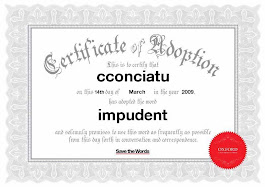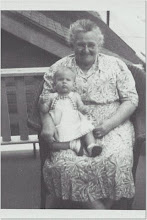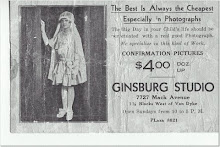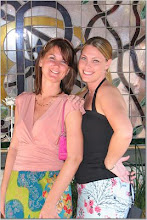 Post Office, Honolulu Hawaii, 1871-1922
Post Office, Honolulu Hawaii, 1871-1922 In the above postcard, directly to the right of the P.O. you will see a smaller recessed building which served as the post office in 1851.
The new stamps were printed in four denominations, including the 13 cent stamp which was used for mail going to the east coast of the United States. These first stamps were known as the Missionary Stamps. The stamp shown in the above picture was hand canceled, probably by using a sponge and red ink according to a very helpful website I referenced for this post: Post Office in Paradise.
 Letter with Two Cent Missionary Stamps
Letter with Two Cent Missionary StampsThis letter, posted on the issue date was sent to 273 Cherry Street on Manhattan Island, New York near the edge of the East River.
 Hawaii's Postmaster General Henry Whitney
Hawaii's Postmaster General Henry WhitneyWho looked like this.
Henry Whitney was appointed first Postmaster General of Hawaii. He oversaw the printing of the first stamps, he also appointed postmasters throughout the Islands, and set up regular overland and steamship mail routes within the islands. Prior to the organized mail delivery, messages were sent by word of mouth, or by letters entrusted to travelers, steamship captains and friends going in the general area of the delivery site. Imagine, if you will, a word of mouth message:
"Miz Matilda, a dismal bloke by the name of William Perty said to come and tell you he's wanting to break off your engagement. Lookin' at you, I can't for the life of me see why he would want to do that, but none the less, he sends his regrets and implores you to send the bloody ring back as it belongs to his dear mother, who I remember to be quite the sour sort, so if you ask me, you should look upon this not as a misfortune but as an opportunity to find someone who deserves a pretty lass like you. A brighter bloke, perhaps, who is a little less "light on his feet" (not that there is anything wrong with that) and who doesn't sip his soup like a frigging canary. Anyway, Miz. That's the message. I'll be happy to help you up off the street now, dust you off, and find you some smelling salts if you like before I go search out Mr. Whorton Mullgoon and let him know his bank went bust and his entire family has been blowed into the Atlantic by a nasty cyclone."
If you understand the mountainous geography of the Islands you will know that mail delivery was difficult, treacherous at times, and slow.
 Hawaii Postage Paid Post Card
Hawaii Postage Paid Post CardThis 2 cent postcard made it's way from Hawaii to Java in just over a year. It was mailed in January 1896 and arrived in February 1897. The postmarks show part of the mailing rout: Honolulu/San Francisco/New York/England/Batvia/Suez/Java.
Early overseas mail was entrusted to travelers, ships captains or ships chandlers. Arrival depended on the trustworthiness of the bearer and the ship arriving safely in port. Copies of legal documents and important papers were often sent on several ships. Should one ship meet with disaster, another would deliver a copy of the document.
 Message and Reply Card
Message and Reply CardThis 1883 two sided Message and Reply Card included paid postage and a perforation for folding and tearing.
I gathered information for this post with the help of Wikipedia and the Post Office in Paradise and hope you enjoy it as much as I enjoyed learning about posting letters in paradise!
Stop by The Best Hearts Are Crunchy for more Postcard Friendship Friday. Also, take time to find and read Eudora Welty's short story "Why I Live At the P.O." It's a delightful read.
Aloha!





























































.JPG)




































